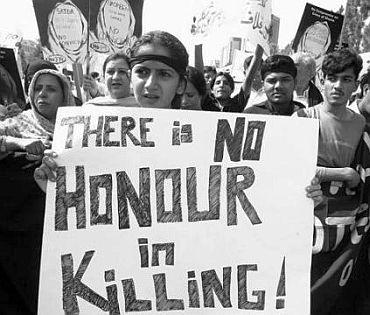Racism in the Justice System:
America’s capital punishment system is corrupted by racial discrimination. Race goes beyond scientific evidence and unfairly influences the legal process to a great extent. For example, the likelihood of a death sentence for a black defendant who kills a white victim is 30 to 1, when compared to a white defendant who kills a black victim. This shows how the race of both the victim and the suspect come into play. Second, are the jurors truly a “jury of peers” when the race of the jurors affects sentencing and is not representative of the general population? Certain groups, such as people of color, are unjustly excluded from the jury service based on their race. On a capital trial jury, white males are more likely to vote in favor of the death penalty, especially if the victim is white. Forty-two percent of the people on death row are African Americans.
This issue was raised on ABC/2020: Justice and Privilege (see Week 9: Crime- Privilege & Racism), where Mr. Brown’s racial profile contributed to his harsh and unfair sentence. Thus, skin color does make a difference in how authorities and the criminal justice system react to the suspect and the determination of punishment.
Japanese Internment Camps:
In 1942, after the bombing of Pearl Harbor, 120,000 Japanese citizens and immigrants living on the West Coast were incarcerated in internment camps that were in poor condition. Although President Roosevelt claimed a military necessity as a basis for this action, it was actually fueled by anti-Japanese sentiments. Americans “feared that the Japanese Americans would spy for Japan or commit acts of genocide” (Macionis, 2010, p. 373). Why then did Americans not do the same to German and Italian Americans since they were also at war with their native or ancestral countries? The truth is simple: white ethnic Americans, who were making up an increasing number of the population at the time, did not face the same prejudice as Asian Americans. Many Americans believed in negative Japanese myths and stereotypes that made them inferior. In addition, most resented and envied the success that the Japanese had worked hard to gain. When Japanese Americans were forced to relocate to the internment camps, they lost their lucrative businesses and sold most of the possessions they owned for less than they were worth.
Native Americans:
As Thanksgiving is soon approaching, many Americans consider this holiday a joyous one; however, the story of this holiday is not a particularly happy one for the Native Americans who were unjustly killed and forced onto reservations by many European Americans. As time has gone by, Native American stereotypes have changed. In the beginning of early European American colonization, Natives were viewed as “bloodthirsty savages” who were violent aggressors that posed a threat. This stereotype declined after they were restricted to undesired land and became less of an economic, political, and territorial threat to European Americans. Afterwards, Natives were viewed as “noble savages” who were brave and spiritual but pitied for being primitive and defeated. The former part of this stereotype, brave and spiritual, may seem positive on the surface, but upon further inspection is shown to contribute to the vicious cycle of prejudice and discrimination.
Everyday Racism:
Colorism- discrimination faced by darker skinned blacks as opposed to lighter skinned blacks. People were asked to rate intelligence of multiple people based on picture. Most people, including people of color, unknowingly gave the same person depicted with lighter skin a higher score. Prejudice towards people of color by whites produces social inferiority, giving minorities less opportunity to improve their social standing. This perpetuates discrimination and forms a vicious cycle because these social disadvantages are interpreted as evidence that minorities do not measure up (Macionis, 2010, p. 366).


